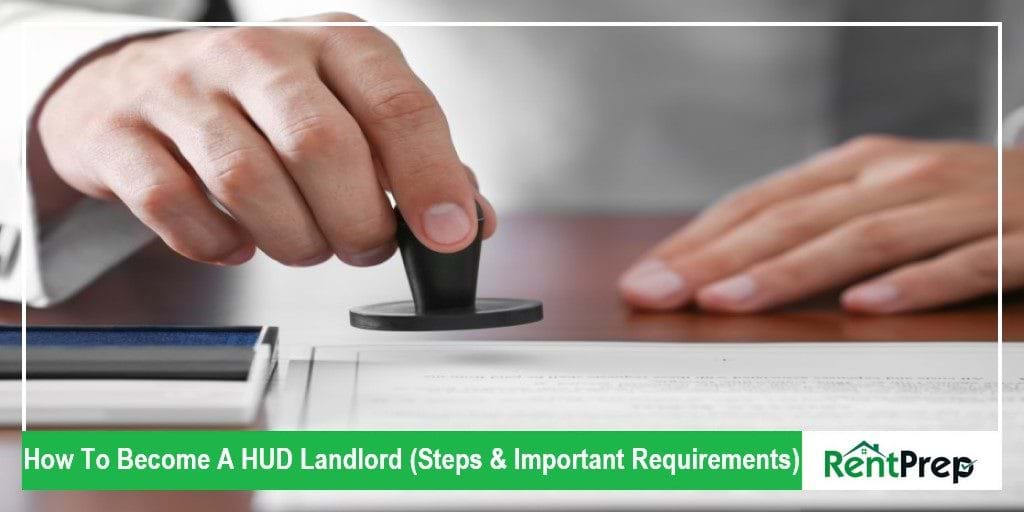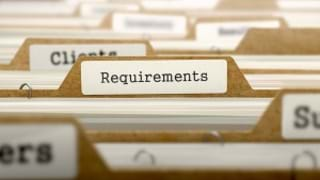
Updated June 2022
Though the HUD program and “Section 8 Housing” has been around since the 1970s, there are many landlords out there who have never been involved with any type of HUD housing. In fact, you might be able to ask a few of your landlord friends how to get approved as a HUD landlord and not find an answer!
Why is this the case?
The simple fact is that there is a bit of a process to becoming a HUD landlord, and there are specific rules under the Section 8 housing act that must be followed when working as a HUD landlord. This means that many landlords will avoid getting involved; they simply already have enough rules to follow!
 However, there are also a lot of benefits to becoming a HUD landlord that many don’t realize, and we’re here today to help break down that wall of confusion.
However, there are also a lot of benefits to becoming a HUD landlord that many don’t realize, and we’re here today to help break down that wall of confusion.
With our complete landlord guide to housing act landlord requirements, learn how to get a house section 8 approved so that you can begin renting to a larger pool of tenants that need housing while still keeping control of your bottom line!
A Table Of Contents On How To Get A House HUD Approved
- The History Of Section 8 Housing
- Why Being A HUD Landlord Is Beneficial
- How To Become A HUD Landlord
- Final HUD Tips
The History Of Section 8 Housing
Before you get into Section 8 and HUD housing, it will be useful for you to know more about this type of fair housing and how these programs were established. Knowing the history behind the programs will make you better equipped to be involved with them more directly.
Section 8 is a housing assistance program that was established in the 1970s. This section of Fair Housing Law was added to assist low-income families, the elderly, and the disabled. The program is run by the Department of Housing and Urban Development, also known as HUD.
HUD doesn’t only work with Section 8 housing. They are also in charge of managing the rules of all sections of the Fair Housing Act. This includes the screening guidelines that you must follow when screening all tenants.
In the original iterations of fair housing under HUD, affected individuals were supported by being placed into specific public housing sectors. These sectors were maintained by local administrative offices of HUD. While there are still public housing units like these today, Section 8 operates a bit differently.
How Section 8 Housing Works
Under Section 8 Housing, there are two different ways that vouchers are given out.
Rules For Tenants
Eligible individuals and families are granted housing vouchers that will cover 70 percent of their rent and utilities. The remaining 30 percent must be covered by the tenant themselves.
The specific areas where these vouchers can be used are not dictated by any guidelines within the Section 8 guidelines. Instead, the price of the housing must fall within a range that is decided by HUD, and the property itself must be approved by a HUD-related official.
To get a voucher, interested individuals must register with the PHA, or public housing agency, nearest to them. There is often a waitlist for these vouchers, and they are not strictly given out on a first-come, first-serve basis. Instead, the vouchers are given out according to need.
Once an individual has a voucher, it is up to them to find housing that fits the conditions of the voucher and negotiate with the landlord about rent and lease terms. Once the lease is agreed upon, a PHA official will inspect the property to finalize that it is deemed acceptable in terms of livability, condition, and price.
If the tenant moves, the voucher goes with them.
Housing Requirements
In other cases, specific properties (known as projects in the program) are given Section 8 status after being approved by the local PHA. This means that eligible tenants who rent the property will be granted the same rights as someone who had got the housing voucher on an individual basis.
If the tenant moves out, the voucher privileges will go to the next tenant that moves into the property as the voucher is linked to the specific property, not to the tenant.
Why Being A Section 8 Landlord Is Beneficial
 You might wonder why getting involved with HUD is beneficial to you as a landlord. After all, there have been many landlords in the past who falsely assume that getting involved with housing assistance programs will only lead you to problems and financial grief.
You might wonder why getting involved with HUD is beneficial to you as a landlord. After all, there have been many landlords in the past who falsely assume that getting involved with housing assistance programs will only lead you to problems and financial grief.
But that simply isn’t true.
Being a landlord that works with Section 8 vouchers can be very profitable because Section 8 housing is in such high demand. Even though you have to follow additional rules and regulations put out by HUD, these are not that restrictive. Plus, you’ll have a much lower vacancy rate which will, in turn, lead to more profits.
There are a lot of benefits to being a HUD landlord that some landlords may not even realize:
- The subsidy is paid directly by the government, so you don’t have to worry about 70% of the rent being paid even if the tenant falls on hard times.
- There is a very low vacancy rate due to high demand.
- Your property is advertised within the program, so you don’t need to do as much to fill any openings.
- The tenants have already been approved by the PHA (in the case of tenant-voucher housing).
Of course, with every positive comes some stressful points that we have to mention as well.
The Downsides Of Section 8 Housing
One of the major worries that landlords have about the program is whether or not they will get paid. The answer is yes; of course! The government pays the subsidy out monthly, so you don’t need to worry about that.
Other concerns can be the fear of disrespectful tenants, but that can happen no matter where you find your tenants. As long as you remember to screen and vet your tenants, this will not be a problem. Needing housing assistance does not mean that the tenants will naturally be any more problematic.
The biggest concern you will need to factor in when you are deciding whether or not to participate in Section 8 housing is the price factor.
HUD housing must fall within a specific range set up by the program itself, which is typically on the low end of fair market value. If you have a property in an area where you could easily get renters for more than the HUD price, you might not want to get involved. Ultimately, the decision about what you need to get for rent to be profitable is up to you.
How To Become A HUD Landlord
Since we’ve covered what HUD and Section 8 Housing are, how these systems work, and why they benefit you as a landlord, let’s get into the details of how to actually get involved in the program.
When A Tenant Has A Voucher
Becoming a HUD landlord, in its simplest form, is actually very simple. If a tenant that has a HUD-voucher makes it through your screening process and you want to rent to them, they can submit notice to their PHA that they want to house at your property. Then, a PHA official will come to approve your property.
If approved, you will need to fill out a small amount of paperwork in order to receive payments from the government, and then you will be a HUD landlord! In this situation, you are only a HUD landlord for as long as a tenant with a voucher is living at the property.
The rules that must be followed will mostly apply from the tenant-end, so there isn’t much you will need to do that is different from working with any other tenant.
How To Get A House Section 8 Approved
If you have a specific property that you believe meets Section 8 guidelines and you would like to rent to tenants in need of affordable housing, you can apply to have that property (and any others you have) to be part of the Section 8 housing program.
Here’s what to do:
- Contact your local PHA office. You can find that information by doing a search here.
- Review the requirements that your PHA has laid out. If any changes need to be made to your property to qualify, make those now to save yourself time later.
- Set up an appointment with the PHA housing inspector. They will review your property to ensure your property and rental rates are in line with the program.
- If your property is approved, you will then need to fill out a W-9 and some more paperwork to be able to receive voucher payments.
- From there, tenants can come to you or you can work to find tenants! Usually, you’ll find them through the PHA office pretty quickly due to a general scarcity of HUD housing options.
From there, you’ll be in the program! While you have a tenant living there, the government will send you monthly checks according to the specific tenant’s income and voucher value. Every year, the property will need to be re-inspected to ensure it is safe for tenants.
Final HUD Tips
As you can see, the Section 8 housing landlords requirements are not that complicated. While the program itself has a lot of nuances, the methodology behind how it works for landlords is quite straightforward.
If you want to manage a property with very low vacancy rates and are willing to keep in line with HUD rent guidelines, getting involved with the program is a great choice.
Keep in mind that while there are a lot of resources from both HUD and your local PHA office that you can use to learn more about managing Section 8 Housing income, there is going to be additional paperwork that you need to fill out. If you don’t have the time or staff to handle this paperwork, you should hold off on getting involved with HUD at this time.
For landlords that do have the resources, however, we believe that HUD housing can be a great way to give back to your local communities while still making a profit on your properties. Just be mindful that you pay close attention to what you are doing along the way!

